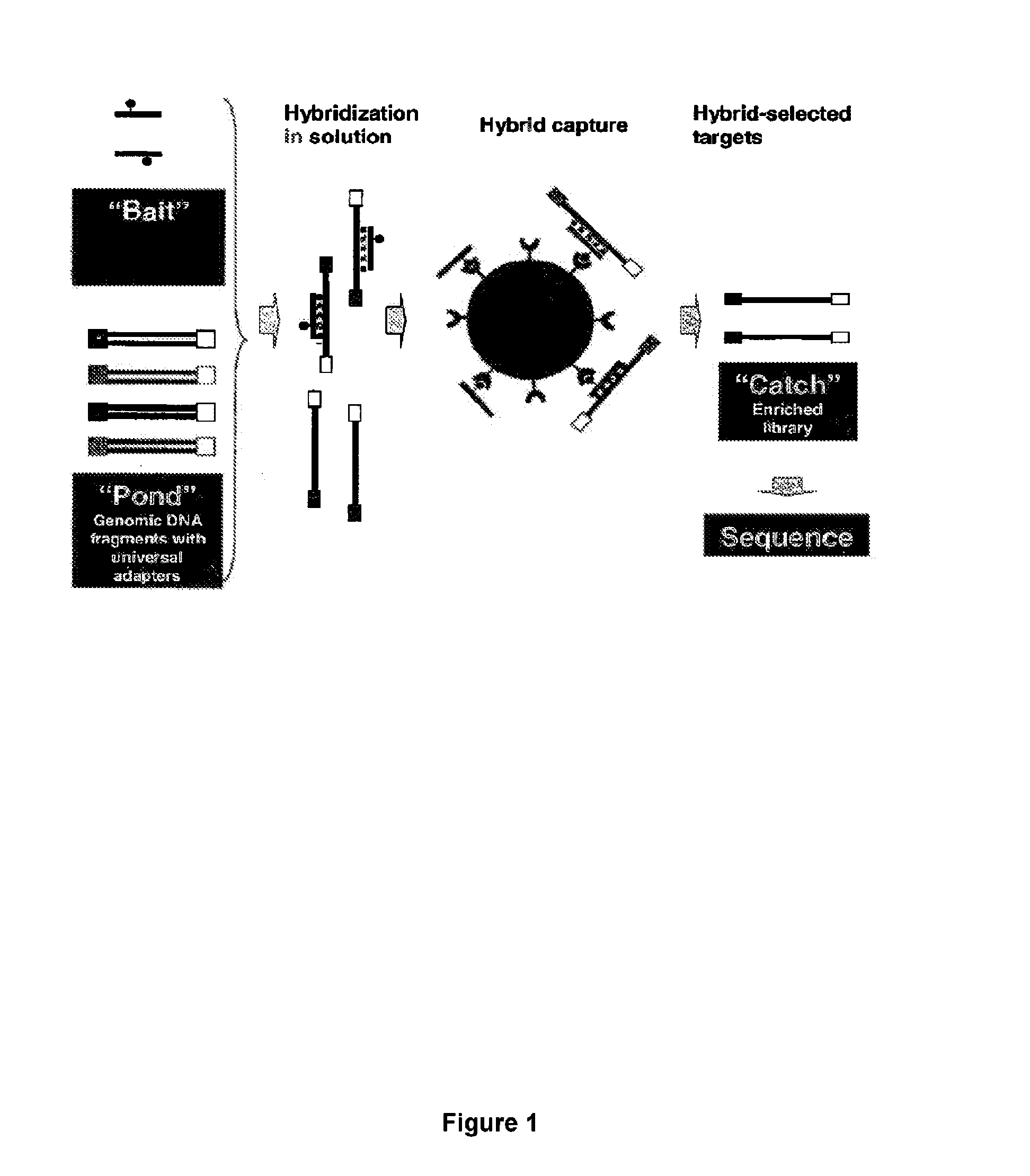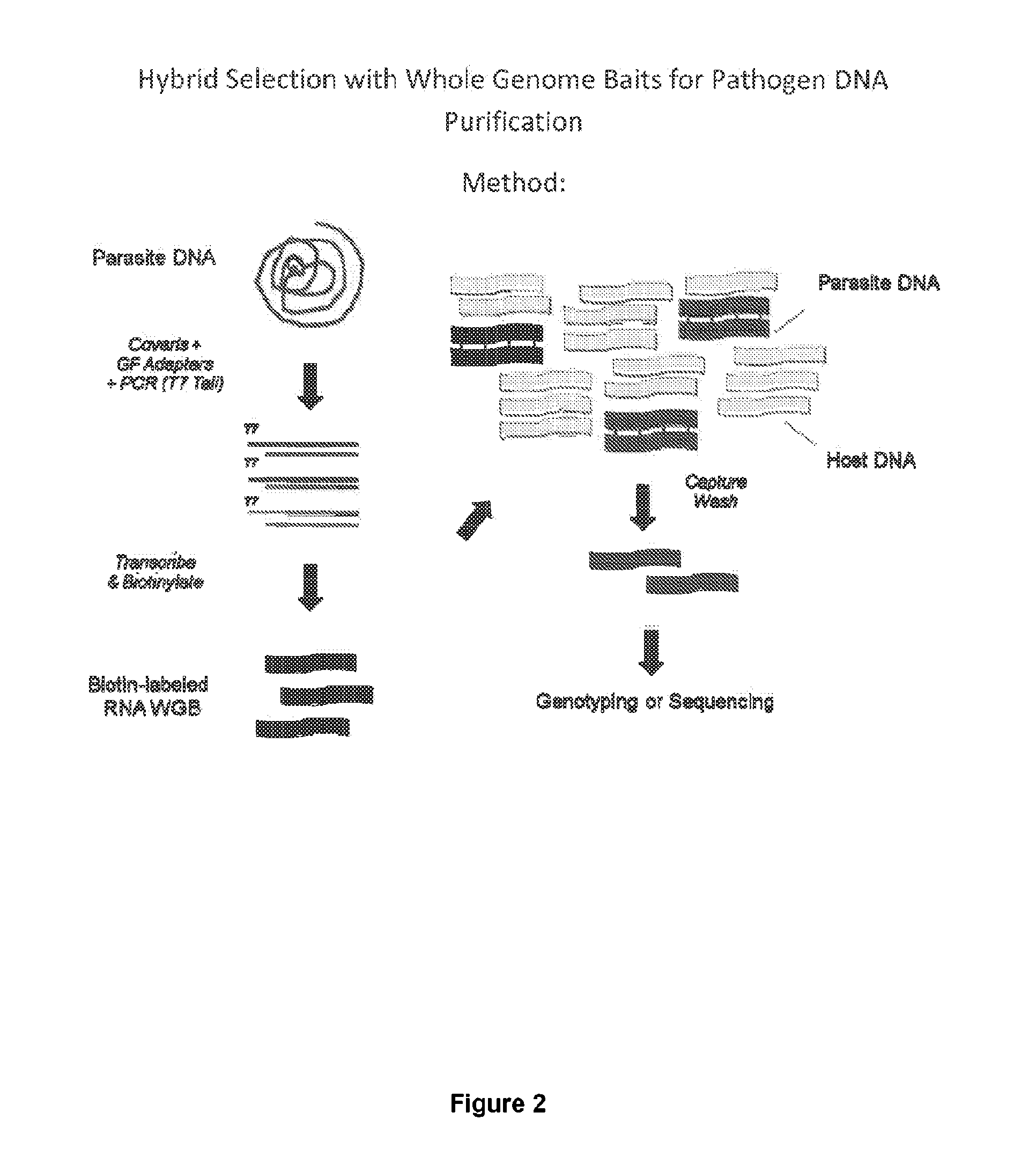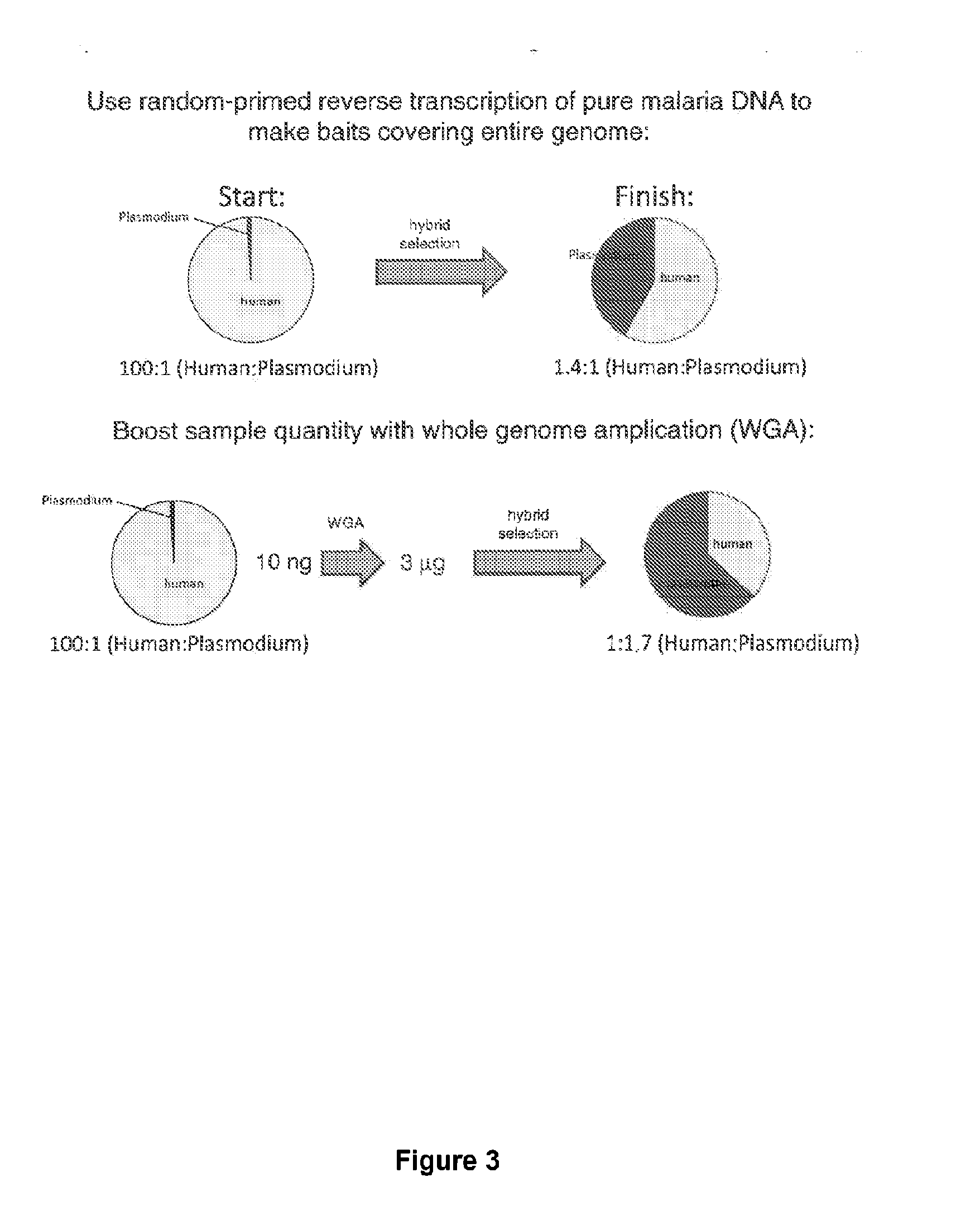Hybrid selection using genome-wide baits for selective genome enrichment in mixed samples
a genome enrichment and hybridization technology, applied in biochemistry apparatus and processes, organic chemistry, sugar derivatives, etc., can solve the problems of sample quality, rather than expense, falling cost of dna sequencing, and significant challenges in achieving differences in representation, so as to improve the depth of sequencing coverage and cost-effective
- Summary
- Abstract
- Description
- Claims
- Application Information
AI Technical Summary
Benefits of technology
Problems solved by technology
Method used
Image
Examples
example 1
Hybrid Selection on Authentic Clinical Samples
[0089]To test this application, we performed WGA and hybrid selection on DNA extracted from a clinical P. falciparum sample (Th231.08) collected on filter paper in Thies, Senegal in 2008 and stored at room temperature for over a year. By qPCR, the Plasmodium DNA in the original sample was estimated to comprise approximately 0.11% of the total DNA by mass. Following WGA and hybrid selection, Plasmodium DNA represented 7.7% of total DNA present, an approximately 70-fold increase in parasite DNA representation. Illumina HiSeq sequencing data confirmed that at least 5.9% of map-able reads in the hybrid selected sample corresponded to Plasmodium. The fraction of human reads after hybrid selection remained high due to the extreme initial ratio of host:parasite DNA, but the enrichment factor in this case was sufficient to rescue the feasibility of sequencing this sample. A total of 26,366 single nucleotide polymorphisms (SNPs) were identified r...
PUM
| Property | Measurement | Unit |
|---|---|---|
| temperature | aaaaa | aaaaa |
| pH | aaaaa | aaaaa |
| affinity | aaaaa | aaaaa |
Abstract
Description
Claims
Application Information
 Login to View More
Login to View More - R&D
- Intellectual Property
- Life Sciences
- Materials
- Tech Scout
- Unparalleled Data Quality
- Higher Quality Content
- 60% Fewer Hallucinations
Browse by: Latest US Patents, China's latest patents, Technical Efficacy Thesaurus, Application Domain, Technology Topic, Popular Technical Reports.
© 2025 PatSnap. All rights reserved.Legal|Privacy policy|Modern Slavery Act Transparency Statement|Sitemap|About US| Contact US: help@patsnap.com



